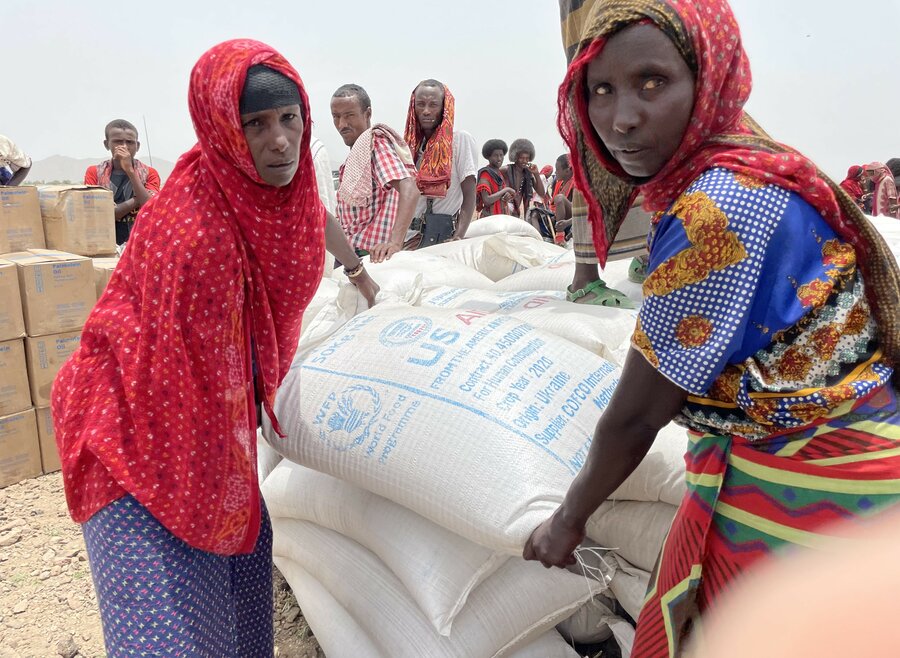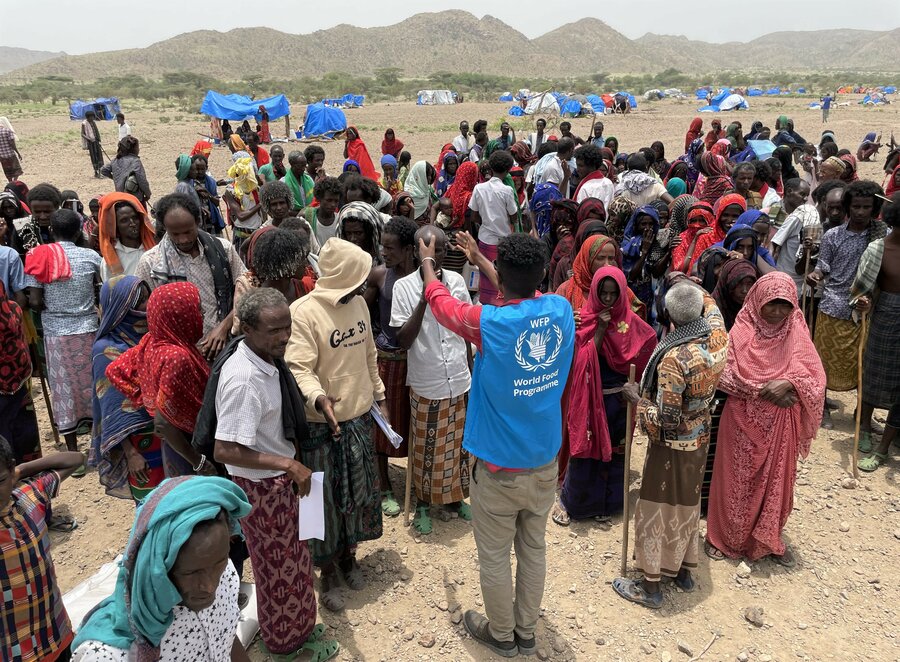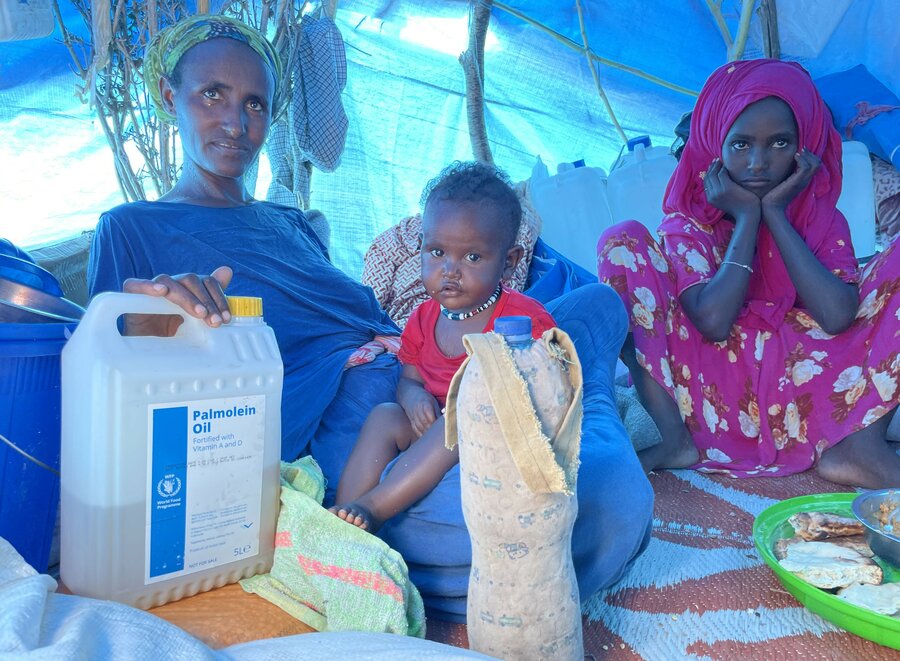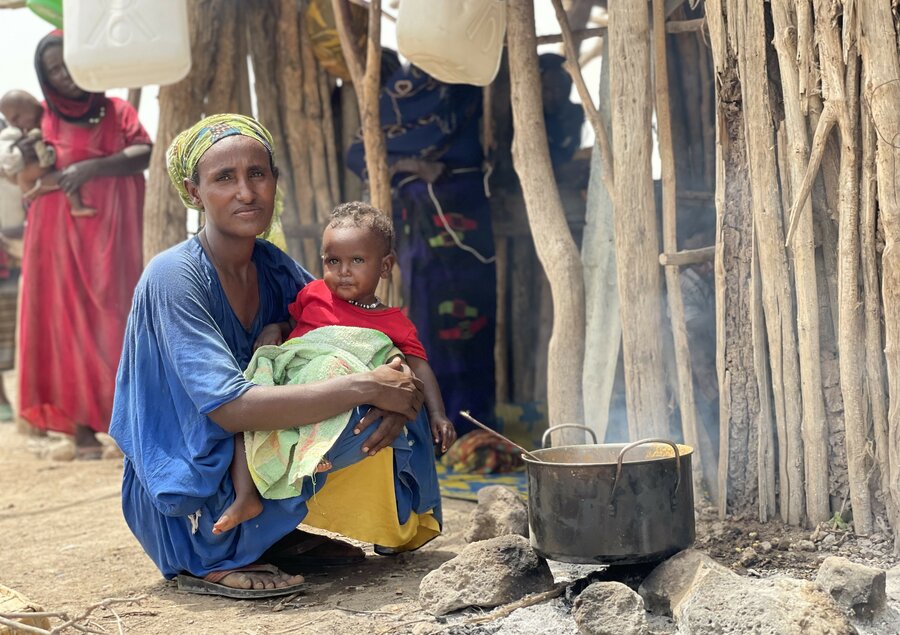Terrified and displaced, families in northern Ethiopia hope for peace

It’s been four months since Letemariam Lakaw gave birth to her baby boy on the floor of their room in Hitsats, a former refugee camp in Ethiopia’s Tigray region that now houses tens of thousands of families displaced by conflict.
“There were days where we didn’t eat any food the whole day and night. I couldn’t sleep at night or think straight in the day thinking about what to feed my kids. I still think about how to provide for my kids.”

The camp she is temporarily calling home was destroyed and set on fire early in the conflict which has since spread to other parts of northern Ethiopia. It has now been reconstructed to house tens of thousands of displaced families like Letemariam’s who are in limbo with little access to food or livelihoods, relying completely on the World Food Programme's (WFP) food assistance to survive.
“Now, I don’t have to worry about people here lending me food or not,” she says. “I will use the food I got efficiently.”
With a smile, she gestures to the sacks of wheat provided by WFP. But with six mouths to feed, it’s vital that urgent and unhindered aid flows into northern Ethiopia or her family - and millions of others - will have nothing to eat.

In June, an Integrated Food Security Phase Classification (IPC) survey estimated 91 percent of Tigray’s population – around 5.2 million people – to be in need of emergency food assistance, while 1.5 million people in the neighbouring regions of Afar and Amhara were highly food-insecure. It also projected that 400,000 people would face catastrophic levels of hunger (IPC 5) by September unless urgent and unhindered aid was delivered.
As the conflict has spread, food supplies have trickled into the region over recent months – reaching just 11 percent of the targeted population. Anecdotal evidence shows families across northern Ethiopia are faced with rising food insecurity as they flee from the path of gunfire.
Some 700km east of war-torn Hitsats, Afar’s Awra district is home to other conflict-affected families. A sea of blue plastic domes dotted across the dry plains offers a safe shelter and respite from the inhospitable heat beating down on them.
This makeshift settlement has been a temporary home for around 5,000 families. Inside one of the domes sits Sadia Mohamed clinging on to her smallest daughter’s hand; her other three daughters and husband huddle around her.
“We travelled on foot,” says Sadia. “At one point my feet were swollen and I had to ask a family for shelter for a couple of weeks until my feet healed.” Six weeks later, Sadia’s feet are still scarred in red-raw blisters. “The whole journey was through the scorching sun and the thirst for drinking water was so agonizing. We were forced to drink rainwater from the ground, but that also made us sick,” she says.
Ethiopia’s Afar region is known as the “cradle of humanity” – in 1974, a 3 million-year-old fossil skeleton called Lucy was discovered there.
It is also one of the hottest places on the planet. Its nomadic people have experienced hunger at the hands of climate change for some time, but now this has been further compounded by the recent conflict. As a result, around half a million people are in urgent need of food assistance.
In the neighbouring Amhara region, more than 700,000 people find themselves in a similar position to Sadia and Letemariam. Wubit Haile is one of those people and struggling to come to terms with what her new life looks like after she fled from her home in Amhara to seek shelter with a relative in Debark town, which lies less than 100km from the frontlines of the conflict.
“Being once self-sufficient and now being reliant on someone is quite hard to accept,” she says as she roasts some of the wheat she’s just received from WFP.

Even before this bitter conflict, 1.3 million people in Afar and Amhara were reliant on food assistance from Ethiopia’s Government. Their urgent food needs are becoming more apparent by the day. WFP is working with Federal, Afar and Amhara Regional authorities to deliver emergency food assistance to over 800,000 people in the two regions, but is poised to reach more if requested by the Ethiopian Government and, crucially, if funding is available.
With no end in sight to the conflict, the situation is likely to worsen as families are caught in the middle. Many, like Wubit, share just one dream.
“I wish peace is restored and I am able to go back home and lead a normal life,” she says.
WFP is calling for US$184 million to sustain and expand its operation to support 3.5 million vulnerable people in northern Ethiopia. Meanwhile, across the entire country, WFP urgently needs US$426 million to save and change the lives of 12 million food-insecure people over the next six months.
Without this funding, the lives and livelihoods of Letemariam, Sadia, and Wubit, along with millions more, are hanging in the balance.
As Sadia puts it: “For now, here, the situation is dark and we’re struggling to keep ourselves alive.”
With thanks to the following countries who make WFP’s emergency response in Northern Ethiopia possible: USA, Canada, UK, Germany, Australia, UAE, Norway, Japan, Austria, France, Korea and Luxembourg.
Learn more about WFP's work in northern Ethiopia
